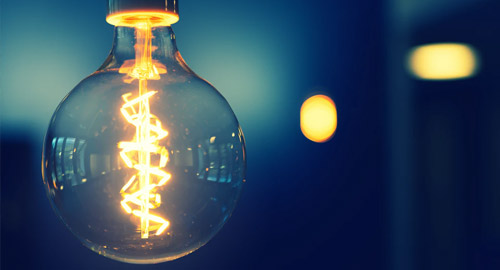Due to the size of the Beekman Group the company has to face a lot of expenses. However, with the latest technology and a lot of team work, a lot of other expenses such as water and electricity can be reduced. These factors all contribute to help save the environment.
Lighting
At Beekman House we have tried to conserve electricity by making a few simple changes. We have we moved away from the traditional fluorescent tube to LED bulbs to light our offices. These are a few of the reasons why:
- Fluorescent Bulbs Contain Mercury
If a fluorescent lamp is broken, a very small amount of mercury can contaminate the surrounding environment. About 99% of the mercury is typically contained in the phosphor, especially on lamps that are near the end of their life. The broken glass is usually considered a greater hazard than the small amount of spilled mercury. The EPA recommends airing out the location of a fluorescent tube break and using wet paper towels to help pick up the broken glass and fine particles. Any glass and used towels should be disposed of in a sealed plastic bag. Vacuum cleaners can cause the particles to become airborne, and should not be used. - Fluorescent Lights Give Off Ultraviolet Light
Ultraviolet emission Fluorescent lamps emit a small amount of ultraviolet (UV) light. A 1993 study in the US found that ultraviolet exposure from sitting under fluorescent lights for eight hours is equivalent to only one minute of sun exposure. Very sensitive individuals may experience a variety of health problems relating to light sensitivity that is aggravated by artificial lighting. Ultraviolet light can affect sensitive paintings, especially watercolours and many textiles. - Contaminants Cause Disposal and Recycling Issues
The disposal of phosphor and particularly the toxic mercury in the tubes is an environmental issue. Governmental regulations in many areas require special disposal of fluorescent lamps separate from general and household wastes. But even though recycling is available, it can be expensive which leads to a bigger issue. If it is too expensive to dispose of the lamps, people are not encouraged to recycle and dispose of the lamps in ways that are harmful to our environment. - Light From Fluorescent Bulb Is Non-Directional
The Light from fluorescent bulbs is non-directional light source. When a fluorescent bulb is lit, it gives off lighting all the way around the bulb or otherwise 360 degrees. This means that only about 60 – 70% of the actual light being given off by the fluorescent lamps is being used. The other 30 – 40% is wasted. This wasted light tends to lead to over lighting certain areas, especially offices. Most offices we go into will not qualify for The Energy Policy Act of 2005 because the wattage per square foot is too high.
For these reasons the Beekman Group has turned to LED lighting. Here are some of our latest statistics:
- From the third floor offices down to the basement we have a total of 1510 4ft tubes and 112 5ft tubes. On the normal fluorescent this would be using a total of 54 360 watts and 6 496 watts. By switching to a healthier and environmental friendly LED tube we have cut the wattage consumption down from 27 180 watts to 2 240 watts.
- With 135 ES globes a similar effect has been achieved. Instead of using the standard 60 watt globe, a 9 watt replacement LED globe has been substituted. The result? Instead of 8 100 watts we are now only using 1 215 watts. We also have a few globes and fittings in the fire escapes and parking bays that have all been converted. This being said the old fittings, globes and tubes would be using 77 467 watts. This has now been reduced to 31 731 watts.
- At the same time it must also be noted that on the surface this is in excess of 59% but the figure is actually more since where the lights would previously have remained on during the time of work in the building the lights on time has now been reduced even further by the installation of movement sensors switching lights on and off automatically.
Electricity
And this is not where the savings stop! We have air purifiers to help keep staff healthier and these have been connected to the office lights thus switching off when not necessary at night. The lift has a standby mode and if not used for 2 minutes shuts down, including lights.
We have recently removed geysers, reducing our electricity usage even more. In the newly re-vamped kitchens we have installed 10 litre under-basin Prisma heaters. This provides hot water when needed and thus eliminates the heating of unnecessary water. A similar system has been set up in the basement showers where the use of Speed Heat units has been fitted to the showers.
To save even more electricity, timers have been installed on all aircons units to shut down systems when not necessary (after hours, on weekends and public holidays).
When taking all these factors into consideration, the Beekman Group Head Office has managed to cut down on the wattage used by between 65% and 70%!
Water
Water is fast becoming a scarce commodity (we all remember the salt water issue we recently experienced on the KZN South Coast!). To add to this saving we will shortly be revamping the bathrooms adding the latest in flush technology to the toilets. We have already installed sensor taps at the bathroom basins which are maintained on a regular basis. These shut off as soon as a person walks away from the basin eliminating any wastage.
Our car wash facilities now boast a new hi-pressure hose that reduces water wastage. A running tap uses 55L in one minute whereas the hi-pressure cleaner uses 9.5L per minute and at the same time gives us extra pressure to complete the required job faster with less water.
All our indoor plants as well as our Green Roof plants have been changed to more robust plants needing less water to maintain. We have already installed two more 10 000L water tanks and are now in the process of harvesting rain water. We’re in the process of adding a further 10 tanks to the system. This water will be used for the building’s toilets, car wash, aircons cooling tower and gardens.
Recycling
With regards to recycling, we have recycling depots on each floor where paper, plastic, aluminium, batteries, glass and ink cartridges can be recycled. This is used on a daily basis by the staff and sorted by the Maintenance Department. Last year we recycled:
- 8555.4 kg paper
- 1212 kg plastic
- 1452 kg aluminium.
This included Nampak collecting and destroying reference material, converting to waste by means of bailing and pulping.
We are proud about the change we’ve been able to achieve. However, we’re even more excited about the future change that we’ll still see as we continue to reduce our carbon footprint. Join us and be a part of the incredible future we know we can create for our planet!
SWITCH OFF YOUR LIGHTS ON 19 MARCH – 8:30PM TO 9:30PM AND SAY YOU MADE A DIFFERENCE.

